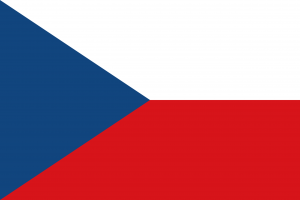Difference between revisions of "Language/Czech/Culture/History-and-Czech-Lands"
m (Quick edit) |
m (Quick edit) |
||
| Line 26: | Line 26: | ||
Learning about the early history of Czech lands can help students better understand and appreciate the rich culture and heritage of the Czech Republic. The Great Moravian Empire and the Hussite movement are just two examples of the many important events and movements that have shaped Czech history and culture. By studying these and other aspects of Czech culture, students can deepen their understanding of the language and the people who speak it. | Learning about the early history of Czech lands can help students better understand and appreciate the rich culture and heritage of the Czech Republic. The Great Moravian Empire and the Hussite movement are just two examples of the many important events and movements that have shaped Czech history and culture. By studying these and other aspects of Czech culture, students can deepen their understanding of the language and the people who speak it. | ||
== Sources == | |||
* [https://en.wikipedia.org/wiki/ | <span class='maj'></span> | ||
* [https://en.wikipedia.org/wiki/ | ==Sources== | ||
* [https://en.wikipedia.org/wiki/History_of_the_Czech_lands History of the Czech lands - Wikipedia] | |||
* [https://www.britannica.com/place/Czech-Republic Czech Republic | History, Flag, Map, Capital, Population, & Facts ...] | |||
* [https://en.wikipedia.org/wiki/Czech_Republic Czech Republic - Wikipedia] | |||
* [https://www.czechcenter.org/blog/2019/10/24/a-history-of-the-czech-republic A History of the Czech Republic Czech Center Museum Houston - A ...] | |||
{{#seo: | {{#seo: | ||
Revision as of 13:23, 12 March 2023
As a Czech language teacher, I find it important to not only teach the language itself but also incorporate cultural information and interesting facts into my lessons. Learning about the history and traditions of Czech lands can help students better understand and appreciate the language and culture they are studying. In this lesson, we will explore the early history of Czech lands, including the Great Moravian Empire and the Hussite movement.
Great Moravia
The Great Moravian Empire was a medieval state that existed from the early 9th century to the early 10th century. It was located in the present-day Czech Republic, Slovakia, and Hungary, and was one of the largest states in Europe at the time. The Great Moravian Empire was founded by Mojmir I, who united a number of smaller Slavic tribes to form a strong and prosperous state. The empire was known for its political and cultural achievements, including the establishment of the Glagolitic script, which was used to write the old Church Slavonic language. This script was later replaced by the Cyrillic script, which is still used today in some Slavic countries, including Russia.
Great Moravian Language
It is believed that the Great Moravian language was a predecessor of the modern Czech language. Some of the earliest written records in this language can be found in the Glagolitic manuscripts of the 9th century. However, the Great Moravian language was eventually replaced by Latin and German, which were the dominant languages of the region at the time.
Hussite Movement
The Hussite movement was a religious reform movement that emerged in the early 15th century in the Kingdom of Bohemia, which is now part of the Czech Republic. The movement was led by Jan Hus, a Czech theologian and philosopher who criticized the corruption and excesses of the Catholic Church. Hus was eventually excommunicated by the church and burned at the stake in 1415, but his ideas lived on and inspired the Hussite movement.
The Hussites were divided into several different factions, but they all shared a belief in the principles of moral reform, social justice, and religious freedom. They also believed that the Bible should be translated into the vernacular language, which at the time was Czech, so that ordinary people could read and understand it. This idea was very influential in the development of the Czech language and literature.
Importance of the Hussite Movement
The Hussite movement had a significant impact on Czech history and culture. It helped to establish the Czech language as a literary language and played an important role in shaping Czech national identity. The ideas of the Hussites also influenced other religious and political movements in Europe, such as the German Reformation and the Protestant movement in England.
Conclusion
Learning about the early history of Czech lands can help students better understand and appreciate the rich culture and heritage of the Czech Republic. The Great Moravian Empire and the Hussite movement are just two examples of the many important events and movements that have shaped Czech history and culture. By studying these and other aspects of Czech culture, students can deepen their understanding of the language and the people who speak it.
Sources
- History of the Czech lands - Wikipedia
- Czech Republic | History, Flag, Map, Capital, Population, & Facts ...
- Czech Republic - Wikipedia
- A History of the Czech Republic Czech Center Museum Houston - A ...
Videos
History of the Czech lands - YouTube
History of Czechoslovakia - YouTube
An Overview of Czech Language, History, and Culture - YouTube
Related Lessons
- Czech Literature
- Czech Republic Timeline
- Architecture and Landmark
- Festivals and Celebrations
- Czech Film and Music
- Czech Cuisine
